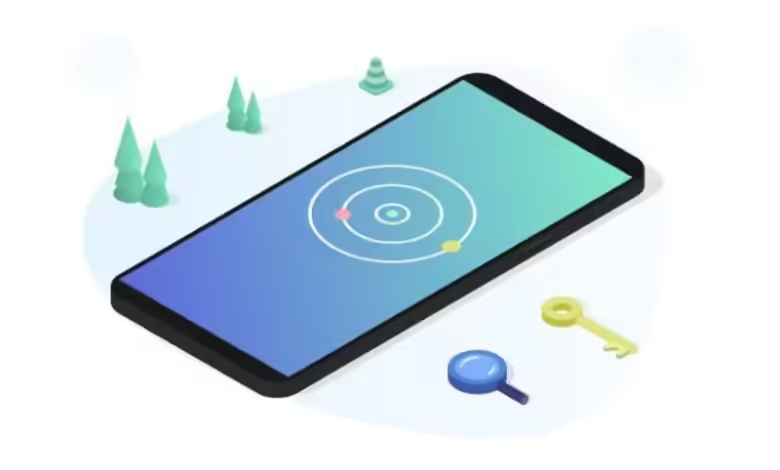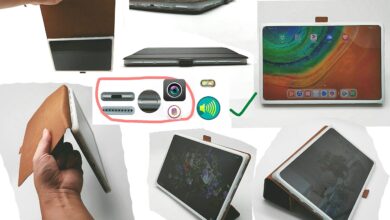Unlocking the World of Techeligible: Your Guide to Clear, Easy-to-Understand Tech Knowledge

Introduction
In today’s world, tech is everywhere—running our homes, managing our workplaces, and connecting us across the globe. But, let’s face it, tech lingo can feel like an alien language sometimes. If you’ve ever scratched your head trying to make sense of tech terms, you’re not alone! That’s where “techeligible” comes in. The concept? Making tech so clear that anyone can “get it,” no matter their background or experience.
The idea behind “techeligible” is simple: tech should be eligible for everyone. No more feeling out of the loop or overwhelmed by jargon. In this article, we’ll break down tech concepts, provide some real-world examples, and walk you through the latest trends—all in plain, simple English. So, grab a coffee and get ready to dive into the world of techeligible.
What Does “Techeligible” Mean, Really?
You’ve probably figured out by now that “techeligible” is all about making tech easy to understand. But it’s more than just simplifying terms; it’s about bridging the gap between tech experts and the rest of us. When tech is accessible, everyone can make the most of it, whether that’s by mastering a new software tool, troubleshooting a device, or simply understanding tech news.
Why Being Techeligible Matters
So, why is it such a big deal to make tech “eligible”? Here’s why understanding tech isn’t just for “geeks” anymore:
- Tech is in everything – From smart fridges to wearable devices, tech is part of our lives.
- Safety and security – Knowing basics like online security and privacy settings keeps us safer.
- Career development – Nearly every job today involves some level of tech knowledge.
- Problem-solving skills – When you understand tech, you’re less likely to need outside help for small issues.
Without techeligible resources, people can feel disconnected from the tech that runs their lives. That’s why, in this age, everyone deserves the chance to be “tech eligible.”
Breaking Down Complex Tech Jargon
It’s easy to feel overwhelmed by terms like “machine learning,” “blockchain,” or “quantum computing.” But no worries! Let’s break down some of the most common jargon so you can feel techeligible in no time.
1. Artificial Intelligence (AI) and Machine Learning (ML)
- AI – Refers to machines or software that simulate human intelligence, like Siri or Alexa.
- ML – Machine Learning is a branch of AI where systems “learn” from data without explicit programming. Think of it as the brain behind AI apps, helping them improve over time.
So, when you hear “AI-powered,” you’ll know it means software designed to think and learn like a human.
2. Blockchain
At its core, a blockchain is a digital ledger—a record of transactions, but decentralized, so no single person or organization controls it. Imagine it as a shared Google Sheet that no one can erase or alter without leaving a trace. Cryptocurrencies like Bitcoin run on blockchain tech, but its uses go far beyond finance.
3. The Cloud
Ever wondered where files go when you “upload them to the cloud”? The cloud is simply a network of servers that store data online instead of on your device. So, if you’re storing photos on Google Photos or Dropbox, you’re using the cloud.
4. Internet of Things (IoT)
The IoT connects everyday devices—fridges, cars, thermostats—to the internet. Ever controlled your home’s lights or temperature with a phone app? That’s IoT in action!
5. Quantum Computing
Quantum computing is computing taken to a whole new level. Instead of using regular bits (0s and 1s), quantum computers use “qubits” that can represent multiple states at once. This could make them lightning-fast for certain tasks. Right now, quantum computing is still in its early stages, but it’s already showing promise in fields like science and cryptography.
Steps to Becoming Techeligible
Ready to boost your techeligibility? Here’s a quick path anyone can follow.
- Start with Basics
Begin by learning foundational tech terms. The goal isn’t to know everything but to feel comfortable with core concepts. - Practice Makes Perfect
Tech isn’t just theoretical; it’s practical. Play around with devices, apps, and software. Don’t be afraid to try and fail! - Stay Updated
Tech moves fast. Following sites or blogs like Wired, TechCrunch, and CNET can keep you in the loop. - Seek Techeligible Resources
Choose sources that explain tech in plain English. YouTube channels, online courses, and forums like Reddit’s /r/ExplainLikeImFive are helpful for breaking down complex concepts. - Ask Questions
Never hesitate to ask “dumb” questions—they’re how we learn!
Real-World Techeligible Examples
To see techeligibility in action, let’s look at some real-life examples of companies and tech concepts breaking down barriers.
Techeligible at Work: Companies Simplifying Tech
- Apple’s User-Friendly Interface
Apple products are famous for being intuitive. Even if you’ve never used a smartphone, you can pick up an iPhone and figure it out without a manual. - Duolingo’s Language Gamification
Learning a language might not seem tech-heavy, but Duolingo uses algorithms to tailor lessons. Its techeligible approach makes language learning feel less daunting. - IFTTT (If This Then That)
IFTTT lets users connect apps and devices with “recipes.” For example, you could set it up to turn on your lights when you enter your home. The best part? It requires no coding or tech know-how!
Everyday Tools That Help Make Us More Techeligible
- Voice Assistants (e.g., Alexa, Google Assistant) – They answer questions, set reminders, and simplify daily tasks.
- Fitness Trackers (e.g., Fitbit, Apple Watch) – They take health data and present it in easy-to-understand metrics.
- Video Calling Platforms (e.g., Zoom, Skype) – They’ve revolutionized work and personal life, especially post-pandemic.
These examples show that techeligibility isn’t just a dream—it’s happening now.
FAQs: Your Techeligible Questions Answered
Q: Is it possible to become tech-savvy without a formal education?
Absolutely! Tons of free resources are available online, from tutorials on YouTube to free courses on sites like Coursera, Udemy, and Khan Academy. You can learn at your own pace without spending a dime.
Q: Can older generations become techeligible?
Yes! In fact, many older people are becoming tech-savvy. With tools designed to be intuitive, age is no barrier. Plus, learning tech can help keep the mind sharp!
Q: Do I need to know how to code to be techeligible?
Not at all. While coding can deepen your understanding, techeligibility doesn’t require it. Plenty of tech users don’t know a line of code yet understand how to navigate today’s digital world with ease.
Q: Are there techeligible resources for parents and kids?
Yes! Sites like Khan Academy, Code.org, and Scratch offer beginner-friendly content for kids, while resources like Common Sense Media help parents navigate tech for their families.
How to Spot Techeligible Content
To find reliable techeligible resources, here are some tips:
- Look for Clear, Simple Language
Avoid content that’s overly technical. If it reads like a research paper, it’s probably not the most techeligible. - Check for Practical Examples
Real-life examples make complex topics easier to understand. - Watch for Visual Aids
Diagrams, charts, and videos often accompany good techeligible content. If it’s all text, it may not be the best resource. - Stick with Reputable Sources
Websites like Wired, TechCrunch, and CNET are known for breaking down tech news into understandable bites.
Conclusion
“Techeligible” isn’t just a term—it’s a movement, a mindset that tech knowledge should be accessible to everyone. It’s about leveling the playing field, so you don’t need to be an expert to feel comfortable using new gadgets, software, or online tools. From understanding basic tech terms to diving into resources that break down complex ideas, becoming techeligible is about making the tech world a little less intimidating.
So, whether you’re just starting on your tech journey or already know your way around a few devices, remember: being “techeligible” is a lifelong process. And the good news? You’re already well on your way! Keep asking questions, stay curious, and let tech empower you—because everyone deserves to be techeligible.



